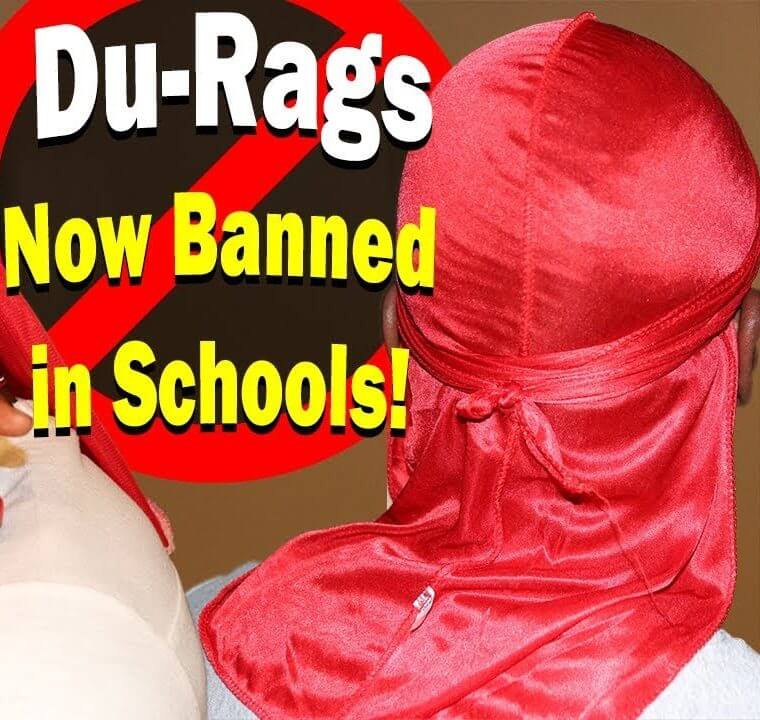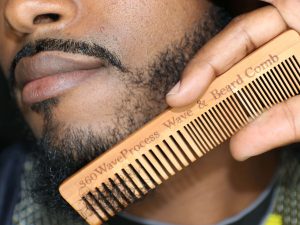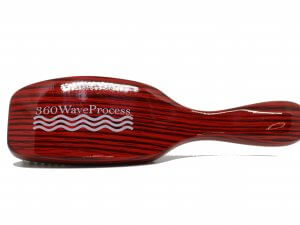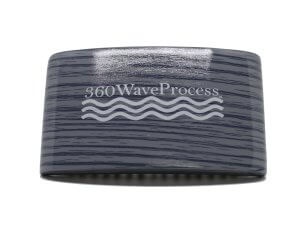Why are some public schools making attempts to permanently ban their students from wearing du rags? According to some, but not all school administrators across America, du rags are reflective of “gang culture”.

Furthermore, some school administrators stress that the du rag bans are not new and that it has long been policy at most schools disallowing students from wearing hoods, hats, beanies, or any other headwear with the exception of religious or culturally significant headwear.
The du rag should not be banned from use in schools because it is a functional headdress used to maintain coily hair and has cultural significance tracing back to the 19th century where creole people introduced it.
One of the main arguments against the use of du rags in schools is that they should be banned since they are reflective of “gang culture”. That statement is very problematic and the near idea of connecting the du rag to gangs speaks to the systemic criminalization of young American males with a certain skin tone.
When did the du rag become associated with “gang culture”? Who placed a gang stigma on the du rag? Answer that question for yourself. These are very important questions that speak the truth and reveal just why a du rag ban is unconstitutional .
Du-rags are “Gang Related”?
To understand how the du rag can be even remotely associated with “gangs,” or any thing “gang-related” we must examine gang culture in America. To be specific, The United States of America which is different from the American continent, formally known as Morocco. You know, the land-mass we that we live on.
We must also understand that “black-people” do not technically exist. Do you understand that “black” is a color? If we take a look at the earliest definition of the word “black” we will see that it is an adjective.
We all remember the parts of speech from grade school right? Adjectives (adj), Nouns(N.), Pronouns, and so on? Nouns describe person, places and things. From the simple English language concepts, we see that black is not appropriately used to describe a person. That is why there is no such thing of a “black” “person”. You are free to continue to read this page. That which previously described human beings as a color, but has since been corrected to avoid the use of the word “black” where possible when describing the male subjects referenced.
Latinos and paciffic islanders do opt to where du rags, it is important to understand that the du rag has American origins. The inception of the du rag can be traced back to the 19th century as it was originally used by a particular group of Americans as a functional hair scarf.
The idea that du rags are reflective of gang culture is merely the outcome of correlation. As mentioned, while a few other non-black groups do tend to wear du rags, we need to acknowledge that du rags have always been predominantly worn by Americans with a complexion containing high levels of melanin. To say that it is reflective of gang culture is disrespectful and prejudice. The first “African”-American gangs did not come about until the 1940’s (20th century) while as mentioned the use of du rags can be traced back to the 19th century.
We must admit that gangs did adopt certain colors in a way to represent their affiliations. If certain schools are in areas that have problematic gang issues it is more realistic to ask children simply avoid any colors that are known to be associated with gangs within the community. The statement that “du rags as a whole are gang related” is a statement that aims to essentially criminalize a traditionally “black” head-cloth.
The “gang-related” argument should be discontinued as it is discriminatory and biased towards the “black” community. In particular, it is biased towards young males who are the ones who have predominately worn du rags throughout the past and present.
CA Edu Code § 35183.5
(2) Each school site may set a policy related to the type of sun-protective clothing, including, but not limited to, hats, that pupils will be allowed to use outdoors pursuant to paragraph
(1). Specific clothing and hats determined by the school district or schoolsite to be gang-related or inappropriate apparel may be prohibited by the dress code policy.
Education codes are laws that govern the policies and administration of out school system.
Non religious headwear has always been against school policy?
School policy is very simple. All schools create their policy following the education code of the state. Any rules that a school makes, must NOT violate the education code of the state.
While the du rag is not a religious head piece, it is in fact a cultural one. The du rag today represents a form of honor and pride in ones appearance and serves a functional purpose that maintains traditionally black/african hairstyles.
According to the Oxford dictionary Culture can be defined as, “The ideas, customs, and social behavior of a particular people or society.”
According to sources online the du rag itself comes from American Slavery in which mostly females used it as a hair tie while doing inhumane forced labor, but that can neither be confirmed nor refuted through a scholarly source.

Some may argue that the sources online that site the origins of the du rag are not credible enough to validate the idea. It is understandable that academic standards such as the aforementioned are in place to validate secondary statements. The statement can be confirmed by viewing images from that century.
These are facts within American history that come up when going into depth about situations such as a ban on du rags.
We must address the controversial topic of American slavery as this very important history tells the truth and speaks the pain of the youth when it comes to expressing exactly why they feel a ban on du rags is wrong.
While I don’t believe that current administrators are inherently racist and want to ban du-rags because mostly black students wear them, I do believe that the ban is unfair and fails to acknowledge the very unique position that Native “Black” Americans as a whole face within this country.
Du Rags Are Not Religious nor functional ?
We obviously can not say that the du rag is religious, but what unique religion do “Black” Americans have besides Christianity which was forced on them during the Maafa also known as the African Holocaust. At least that is what has been taught to the heirs.
As a people they were stripped from any unique culture they may have had prior to the Maafa. They were forbid from practicing any form of their original African culture which was based on spirituality and honoring ancestors.
We know that we are not white caucasain (European). That is not our culture. We have no technical knowledge of African ancestry after centuries of being detached. We can not realistically claim one culture from the many countries on the continent. So what does this mean?
So what is our culture? What is ours that separates us from the many other groups in America? What Do We Do, That we started as group?

The Du rag reflects the answer to all of those questions. To the youth it represents honor and a cultural pride in ones identity.
Banning du rags is like banning a part of a child’s cultural identity.
This is the pain that the Black Youth feel when they are told their du rag is banned. A historical pain!
It is a slap in the face. Wearing a Durag is something they do. It is their culture. It is a part of their identity. The identity that they till this day, still struggle to find pride in after being over exposed to all of the negative history and statistics that American media feeds them about their people.
We know the U.S. school system doesn’t teach black children their full true history as it goes much beyond slavery.
Luckily the children in today’s time have the great advantage of growing up in the Information age. They are not as easily mis-educated as the generations before them. They have informational content such as Hidden Colors that works to teach them more truth relating to their ancestry.

As for the functionality of the du-rag it is well known that as a group, mostly black males use it to lay their hair with the goal of maintaining their once again, cultural hair style of waves. A du-rag goes hand and hand with the cultural hairstyle of waves. Some men also wear du-rags as a functional tool to keep their cornrows/braids in tact longer.
Schools are government run and should not create and enforce policies that violate cultural customs.
This is not new. The only difference is that Black Youth are finding pride in their customs and naturally want to take what was once kept in the home, outside so they can proudly display an aspect of their culture. Something that makes them feel important and culturally unique.
Does The Education Code Ban Du Rags?
After searching through the CA Education Code for information regarding head wear I found this CA Education Code 35183
While it’s not reasonable to believe that all states have the same Education Codes, It is reasonable to believe that all states adopt a standard and then add their own codes as they see fit for specific issues/concerns within their state. That being said, codes listed here are specific to the state of CA. however, due to how general these codes are, they are likely the same in other States.
CA Edu Code § 35183.5
This basically say school can set policy on clothing. in addition to gang-related clothing. We already discussed how du-rags are not gang-related.
(2) Each school site may set a policy related to the type of sun-protective clothing, including, but not limited to, hats, that pupils will be allowed to use outdoors pursuant to paragraph
(1). Specific clothing and hats determined by the school district or schoolsite to be gang-related or inappropriate apparel may be prohibited by the dress code policy.
Furthermore, There are additional clauses that state parent may choose to opt their child out of dress codes if they see fit.
Read California Education Code § 35183 (B), (C), (E), & (F) to fully overstand.
CA Educ Code § 35183
(b) The governing board of any school district may adopt or rescind a reasonable dress code policy that requires pupils to wear a schoolwide uniform or prohibits pupils from wearing “gang-related apparel” if the governing board of the school district approves a plan that may be initiated by an individual school’s principal, staff, and parents and determines that the policy is necessary for the health and safety of the school environment. Individual schools may include the reasonable dress code policy as part of its school safety plan, pursuant to Section 32281.
(c) Adoption and enforcement of a reasonable dress code policy pursuant to subdivision
(b) is not a violation of Section 48950. For purposes of this section, Section 48950 shall apply to elementary, high school, and unified school districts. If a schoolwide uniform is required, the specific uniform selected shall be determined by the principal, staff, and parents of the individual school.
According to the Education code schools can create policy to enact a dress code with the participation of parents of the individual school.
Must Read CA Education code § 35183 (E) and (F)
(d) A dress code policy that requires pupils to wear a schoolwide uniform shall not be implemented with less than six months’ notice to parents and the availability of resources to assist economically disadvantaged pupils.
(e) The governing board shall provide a method whereby parents may choose not to have their children comply with an adopted school uniform policy.
(f) If a governing board chooses to adopt a policy pursuant to this section, the policy shall include a provision that no pupil shall be penalized academically or otherwise discriminated against nor denied attendance to school if the pupil’s parents chose not to have the pupil comply with the school uniform policy. The governing board shall continue to have responsibility for the appropriate education of those pupils.Pursuant to CA Educ Code § 35183 (2017) (F) If a parent chooses not to comply with uniform policy, their child can be granted permision to essentially wear what they want (as long as it is respectable of course) and the school administrators won’t be able to punish/do anything to there student thereafter
How can you fight against this Ban?
After searching through the the CA Education Code, there weren’t any clauses specifically banning on du rags. There was only CA Edu Code § 35183.5 which left uniform and dress code policies up to the schools. The code only expressly stated that gang-related apparel may be prohibited.
We already discussed how the idea that du rags are gang related is biased and discriminatory so that is definitely not a permissible argument that can be used to justify a specific ban on du rags.
Black women/girls have already gone through this battle within the school system. Schools were banning young black women from wearing hair scarfs which we all know is necessary to basically style their naturally coily hair.
It is shocking and ironic that the very same situation is going on except with male students. I repeat. The very same issue is ongoing and literally the only difference in the situation is gender.
These school administrators who are attempting to ban du rags arguably need to be schooled in the study of common law. If the subject of black students wearing hair scarfs to manage their hair has already been concluded with black females and resulted in exceptions for their unique case what difference does it make when the same topic applies to black males, wearing durag which are essentially a masculin hair scarf for waves or braids/cornrows????
You can fight against this ban by discussing this topic with your parent(s).
if you can’t articulate the points well enough, it may be easier to share this article with them. Ask them to read it and then discuss the points made in this article. Ask them if they agree with the points made.
Naturally, parents want to protect their children. They want to do what is best for them. Some parents may feel that du-rags aren’t worth the fuss in their busy lives while other may be enlightened with an open mind and understand why their Black American son is making a fuss on being able to wear a du rag.
What Can a Parent Do to Stop this Ban?
According to CA Educ Code § 35186 (2017) there is a uniform complaint process that can involves submitting a written complaint to the principal of the school.
If the complaint can’t be solved by the principal it shall be taken to the governing board of the school district at a regularly scheduled hearing of the governing board of the school district. Location and times of the meeting can be found by googling your school district’s meeting. Example: Los Angeles unified school district board meeting.
Another alternative is to enroll your child into a private school where you’re likely to face less issues as private schools don’t typically have to follow the rules/policies that bind publicly funded state schools.
Private schools also tend to have much wider curriculums that to which they are normally able to cover said material in the same time as a public school would with their shorter curriculum.
Wave Check! Du-rag Culture.





